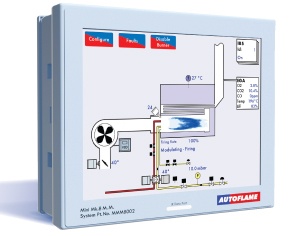Traditional firetube, watertube or cast iron boiler systems rely on mechanical linkages to control the fuel/air ratio of the burner just like vehicle manufacturers used linkages on carburetors up until the late 1980’s. Similar to the automotive carburetor, linkage systems on boilers are extremely outdated technology. The problem is that linkages get out of calibration, begin to slip and can only control a narrow range of functions on a boiler based on a few inputs. This is typically due to repeated operation and ever changing environmental conditions, much like we are used to in the Northeast.
Linkage systems are less fuel efficient, require more service/maintenance, and generate greater emissions. Although combustion can be optimized at a few points during the firing range, there are many areas on the fuel curve which are far from perfect control. If a connection on a linkage system fails in a way that a set screw or pin becomes loose or disconnected, fuel and/or air settings will change radically, causing efficiency loss. At worst, a fuel-air mixture that causes high carbon-monoxide levels could accumulate to a level sufficient enough to cause an explosion.
With a linkage-less system, the positions of all fuel and air (and sometimes flue gas recirculation) servo motors are monitored constantly and proven by the flame safeguard. A positioning error of any kind causes the burner to shut down safely and sound an alarm. In much the way a modern fuel injection system controls fuel/air mix in any vehicle, a linkages-less burner control system, like the Autoflame Combustion Management System, precisely controls several servomotors that safely coordinates boiler operation for optimal performance. The Autoflame system ensures that each point within the fuel curve operates as efficiently as the burner can quickly mix the fuel and air.
If you are considering or are installing a new boiler, choosing a linkage-less system will allow the boiler to operate at maximum efficiencies. Why buy a new boiler and mount old technology on it? Automation reduces fuel costs, emissions, maintenance and ensures safety is paramount. The controller can also manage all of the boiler functions simultaneously, including the flame safeguard, boiler feed water control, combustion trimming, surface blowdown, draft control, valve proving, water level control, reporting, lockout logging, sequencing, scheduling and more. Most of these systems are touchscreen, making monitoring and operation of the boiler room much more intuitive.
Linkage-less burner control systems enable the users to achieve significant fuel and emission savings over conventional mechanical linkage systems. Customers can expect to see average fuel savings of 5-7% when compared to linkage control systems. Integrating a VFD (variable frequency drive) will also reduce electrical consumption and further improve combustion control. Regardless of your load demand requirements these systems can be set up to respond quickly and effectively.
Let the Wilkinson Companies take a field trip over to your boiler room and see if a linkage-less control system may be right for your facility. If you are unsure then please contact us for a no cost analysis.


